Request a video call
Confirm Your Virtual Consultation
Dr. GIAN PAOLO TASSI | Neurosurgery Specialist Profile Overview
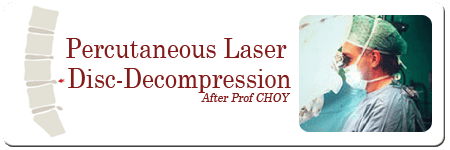
Treatment for Disc Hernia by PLDD or
Percutaneous Laser Disc Decompression

Percutaneous Laser Disc Decompression alias PLDD is a medical procedure that uses laser beams to treat pain caused by disc hernia in back and neck. Over the past century, the traditional invasive laminectomy and discectomy procedures have been performed, yet since then, technology has improved and minimally invasive approaches have evolved.
PLDD or Percutaneous Laser Disc Decompression is the first of its kind procedure developed in the early 80’s. Over time, PLDD was fine-tuned by introducing an optic fiber inserted in the disc by X-ray guidance. The laser reduces the small portion of the inside disc material called nucleus pulposus. Since then, thousands of PLDD procedures have been successfully performed worldwide.
PLDD procedure is an alternative for conventional back surgery (laminectomy). The procedure dramatically minimizes the incidence of scarring and other complications of laminectomy. It is established that PLDD reduces the pressure between the discs and the pain and the nerve compression pain diminishes and disappears.

Dr. Choy and PLDD
In 1984, Dr. Choy and his co-workers introduced laser energy into herniated/protruded disc to vaporize a small volume of nucleus pulposus, reducing the spine pressure, leading to migration of the herniated portion away from the involved nerve root. This model was tested successfully first in Columbia University, by the College of Physicians and Surgeons in New York City and in the neurological institute in Austria.



Dr. GIAN PAOLO TASSI got his Degree in Medicine and Surgery at the University of Chieti, Magna Cum Laudae in February 1990, and specialized in Neurosurgery at the University of Modena and Reggio Emilia. Later he did voluteer work and also worked as a neurosurgery consultant in several hospitals.
Since 1992, Dr. Gian Paolo Tassi has performed more than 1,800 neurosurgical procedures and more than 3,500 PLDD procedures having the largest world's PLDD experience after Dr. Johannes Hellinger from Munich (Germany) and Dr. Daniel S.J. Coy from New York City (the inventor of the PLDD and the tutor of Dr. Gian Paolo Tassi); both, Dr. Hellinger and Dr. Choy have retired 1 years ago due to their age. Dr. Gian Paolo Tassi has published also 40 scientific publications as an author and co-author in Neurosurgery.
He won first prize for the best Lecture at the PLDD 12th International Congress of IMLAS - Istanbul June 2005, and is a member of The New York Academy of Sciences after working with renowned Dr. Choy. Dr. Gian Paolo Tassi is also:
- Member of the Italian Society of Neurosurgery
- Member of the European Skull Base Society
- Member of the International Society Laser Muscleskeletal
The main thing that differentiates Dr. Gian Paolo Tassi from other spine care specialists in Italy is that he has been using Dr. Choy’s PLDD treatment method for Percutaneous Laser Disc Hernia, being the only doctor in Italy currently authorized to use this method, being trained by Dr. Choy himself.
Dr. Choy's PLDD treatment method is available in 2 clinics in Italy where Dr. Gian Paolo Tassi works, such as Rome, but mainly San Benedetto del Tronto in Marche region, in Italy.

Dr. GIAN PAOLO TASSI | Neurosurgery Specialist, San Benedetto del Tronto,San Benedetto del Tronto, Italy Profile Details

Dr. Tassi - Expert in Treating Disc Hernia
by PLDD - Percutaneous Laser Disc Decompression

Dr. Choy's PLDD treatment method is used by Dr. Gian Paolo Tassi in Italy where he has successfully performed the procedure on hundreds of patients.
PLDD is synonim with Dr. Gian Paolo Tassi's in Italy. Being the only accredited specialist to use this method in the peninsula, in cities such as Rome, but mainly San Benedetto del Tronto in Marche region, in Italy.

Dr. GIAN PAOLO TASSI | Neurosurgery Specialist Treatments Offered

Percutaneous Laser Disc Decompression PLDD

 Percutaneous Laser Disc Decompression Therapy for Disk Hernias, Cervical, Dorsal (except for the T1-T5) and Lumbar (not to be confused with other Laser Treatments) is a new technique for NON-SURGICAL procedure made under local anesthesia, in Italy. The nucleus pulpous of the inter vertebral space concerned is struck by a laser beam after the introduction of an optical fiber; this one is placed in contact with the nucleus pulpous through a needle placed in the patient's back: all under X-Ray control. From the physical point of view PLDD produces a vaporization of at least part of the nucleus pulpous and determines the affected nerve decompression (the aim of the procedure is not the reduction or disappearance of the hernia but the marked reduction of pressure on the nerve).
Percutaneous Laser Disc Decompression Therapy for Disk Hernias, Cervical, Dorsal (except for the T1-T5) and Lumbar (not to be confused with other Laser Treatments) is a new technique for NON-SURGICAL procedure made under local anesthesia, in Italy. The nucleus pulpous of the inter vertebral space concerned is struck by a laser beam after the introduction of an optical fiber; this one is placed in contact with the nucleus pulpous through a needle placed in the patient's back: all under X-Ray control. From the physical point of view PLDD produces a vaporization of at least part of the nucleus pulpous and determines the affected nerve decompression (the aim of the procedure is not the reduction or disappearance of the hernia but the marked reduction of pressure on the nerve).
Percutaneous Laser Disc Decompression was invented in the United States in the 80's by Prof. Daniel Choy. Dr. Tassi had the honor and good fortune to practice at Columbia University in Manhattan (New York). Dr.Tassi said "thanks to the one who created PLDD that works". Since the beginning of clinical trials to date about 4,000 patients were treated by Prof. Choy.

After treatment, which has a variable duration from 30 to 60 minutes, the patient is recommended to rest in bed for 24 hours and the next day he may begin a gradual recovery. The patient can resume their work within 15 to 30 days (depending on the type of work carried out). In 3% of cases the disk hernia cannot be reached but this is only verifiable during the procedure.
next day he may begin a gradual recovery. The patient can resume their work within 15 to 30 days (depending on the type of work carried out). In 3% of cases the disk hernia cannot be reached but this is only verifiable during the procedure.
Thanks to technical specification, there is no need for skin lesions and there is no muscle damage. The removal of ligaments and bone is not necessary. In conclusion, all the procedures used in the classic surgical approach (orthopedic or microneurochirurgico) that usually involve complications uch as adherence for perpendicular lesions, spinal instability, pain from muscle damage etc. are now history because of PLDD. However, in those patients in whom the PLDD treatment did not produce the success hoped, the surgical procedure is not PRECLUDED by ANY MEANS.
Percutaneous Laser Disc Decompression best works for:
- Patients with single/multiple disc protrusion or patients with real disk hernias documented examination of magnetic resonance imaging (MRI) or Computerized Axial Tomography (TAC) (these exams must not be more than 90/120 days old.
- Patients who have not responded to the classical conservative therapies (rest, anti-inflammatory medications and muscle relaxants, psychiatric therapies);
- Patients with relapses from post-surgical hernia repair.
Who cannot benefit from this technique?
- Patients with severe spinal arthroscopy processes or calcified hernias;
- Patients with completely expelled hernia and/or disk fragments migrated;
- Patients with vacuum disk (i.e. with small air bubbles at the level of the inter-vertebral disk)
- Patients with severe lumbar spinal canal stenosis.
Contraindications:
- Hemorrhagic Diathesis
- Spondilolistesis medium or serious degree
Results and post-treatment recommendations: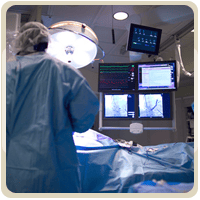
- 85% of patients symptoms and/or lombosciatalgica lombalgica dissapear. In 70% of cases it happens in the first 2-3 weeks, in the remaining 30% it takes from 3 to 10 weeks. In 4% of cases, in the first 5 years after treatment, relapses may occur (quite often in such cases, you can repeat the treatment)
- In about 10% of cases for the first 4-5 days there is a presence of more or less distinct lumbar pain (entry point laser fiber) which can be eased with the use of local application of ice.
- Patients are discharged after 72 hours at most hospitals;
- Is recommended bed rest for the first 24 hours;
- Gradual gait (10-15 minutes for 3-4 times per day) is recommended for the next 3 days;
- The patient may resume their work in a range of 15 to 30 days (depending on the type of work performed
- Clinical audits must be carried out in 2, to 6 months and one year
- In cervical hernias is recommended the use of cervical collar of Shantz for 4-5 days while in lumbar hernias is recommended using a lumbar corset fence for 15-30 days

Dr. GIAN PAOLO TASSI | Neurosurgery Specialist Certificates, Accreditations, Qualifications Treatments Offered

Dr. Tassi's Qualifications

Dr. GIAN PAOLO TASSI | Neurosurgery Specialist
- Born June 26, 1962 in Macerata

- Resident in Grottammare (Abruzzo, Italy)
- Degree in Medicine and Surgery at the University of Chieti "Magna cum laude" in February 1990
- Specialized in Neurosurgery at the University of Modena and Reggio Emilia in December 1995
- Post doctoral Internship Microsurgery Department from March 1990 to June 1990
- Internship Neurosurgery Department from July 1990 to June 1992 'Hospital of Teramo
- Taken in part in the Division of Neurosurgery Hospital "G. Mazzini "in Teramo on 21/07/1992
- Consultant neurosurgeon between '96 and -98 at the Civil Hospital of San Benedetto del Tronto
- Consultant neurosurgeon from 2000 to 2002 at the Civil Hospital of Ascoli Piceno
- Performed more than 1,800 neurosurgical procedures and more than 3,500 PLDD procedures since 1992
- Member of the Italian Society of Neurosurgery
- Member of the European Skull Base Society

- Member of the International Society Laser Muscleskeletal
- Former member of the Italian Society of Neurologists, Neurosurgeons and Neuroradiologists
- Author and co-author of 40 scientific publications in all fields of Neurosurgery
- Participation in Scientific Conferences 53 Conferences and in 8 of them as Speaker
- Organizer and head of the first Italian meeting on PLDD (San Benedetto del Tronto to Pescara, 20-21 October 2004)
- Collaborator of Prof. Daniel S.J. Choy, Director of Laser Spine Center of Columbia University in New York, Manhattan, New York
- Training work carried out at the LASER SPINE CENTER IN NEW YORK
- Co-author, along with Prof. D.S.J. Choy the first two procedures (two own patients) performed in Italy (Florence, October 31, 2002) Percutaneous Laser Disc Decompression Hernia
- To date (09/11/2010) over 3000 procedures PLDD have been performed using Dr. Choy PLDD method (lumbar and cervical)
- Biographical sketch included in the twentieth edition of Who's Who published in December 2002
- Registered with the doctors in the province of Ascoli Piceno in April 1990 under number 2262
- Winner of the first prize for the best Lecture on PLDD at the 12th International Congress of IMLAS in Istanbul, June 2005
- MEMBER OF "THE NEW YORK ACADEMY OF SCIENCES"
Fellowship:
- From December 2002 to January 2003 Laser Spine Center New York City under the direction of Prof. Daniel S.J. Choy, Columbia University New York City
- From May 2004 to July 2004 Laser Spine Center New York City under the direction of Prof. Daniel S.J. Choy, Columbia University New York City
- From June 2006 to July 2006 Laser Spine Center New York City under the direction of Prof. Daniel S.J. Choy, Columbia University New York City
Licensure:
- April 1990 Italian registry of Medical Doctors and Surgeons, number 2262
- September 2007 Director of European Partners of New York, Laser Spine Center
- October 2013 GMC (General Medical Council) registration number 6160994
Hospital Appointments:
- July 1992 to Octomber 2003 Vice-Chairman Department of Neurosurgery Teramo City Hospital, Teramo-Italy, during which period performed more than 1800 neurosurgical procedures in all field of neurosurgery
- January 1991 to December 1998 Neurosurgeon Consultant at "City Hospital of San Benedetto del Tronto" Italy
- January 2000 to December 2002 Neurosurgeon Consultant at "City Hospital of Ascoli Piceno" - Italy
- September 2007 - Present Director of European Partners of New York Laser, Laser Spine Center
- November 2003 - Present Chairman Department of Neurosurgery and Spine Surgery Casa di Cura "Villa Anna" Hospital, San Benedetto del Tronto, Italy
Reviewer:
- Lasers in Medical Science
- Neurology India
Neurosurgery Societies:
- Italian Society of Neurosurgery
- Ex Italian Neurological and Neurosurgery Hospital Association
- Ex European Skull Base Surgery Association
Speciality: Neurosurgery and Spine Surgery

Prof. Choy about Dr. GIAN PAOLO TASSI
"Gentlemen, In 1986, I originated the procedure known as PLDD (Percutaneous Laser Disc Decompression) at the University of Graz with the late Dr Peter Ascher (the first neurosurgeon to use laser in brain surgery). Subsequently i trained more than 300 neurosurgeons and other spine surgeons all over the world: Western Europe, Central and South America, China, Japan, India, the UAE, Riyadh, the U.S.
Without reservation I must say my very best student was DR. GIAN PAOLO TASSI of Grottammare, Italy. Since he learned PLDD from me in Florence, he has performed more than 3000 cases, and in turn has trained many surgeons all over the world.
I can recommend him without reservation: he is skilled, honest, and ethical. I cannot praise him too highly.
Daniel S. J. Choy, M.D., F.A.C.P.
Director
Laser Spine Institute,
New York, N,Y., USA"

Dr. GIAN PAOLO TASSI | Neurosurgery Specialist Testimonials

Testimonials on PLDD


The touching letter from the parents of Thomas, the baby saved to Mazzini "Thank you for all that you do"
This letter is a touching testimony, the thanks of two parents who found in our organization health persons, loving, sharing and solidarity. And most importantly, someone that would save their small, involved in a serious car accident. We publish it because we are convinced that it is not exceptional but the results obtained from the daily and constant exercise of professionalism on the part of our doctors and our nurses.

Dr. GIAN PAOLO TASSI | Neurosurgery Specialist Awards & Recognitions

Dr. Tassi's PLDD Method in the Media

Herniated Disk Laser Care
Arrives in Italy the "percutaneous laser disc decompression", a quick and painless method to heal disk hernia, for now (2003) made in Florence on 40 volunteer patients. Unlike traditional surgery, complex and invasive, laser technique achieves the target with pinpoint accuracy by a thin needle, without causing damage to the surrounding tissues, the intervention lasts 10 minutes, under local anesthesia, and does not require sutures and scars.
Vera Magazine
Gennaio 2003

Neurosurgery Awards to dr. Tassi for laser surgery
Neurosurgery Awards to dr. Tassi for interventions with the Important recognition for laser Dr Gian Paolo Tassi. The young neurosurgeon from San Benedetteo neurosurgery unit at the hospital Mazzini di Teramo, starred with prof. Daniel S.J. Choy at the 17th International Congress on lasers in Medicine in Florence, where, for the first time in Italy, two percutaneous laser disc decompression surgeries were carried out to treat intervertebral disc herniation".
The innovative procedure has allowed the two doctors to intervene in local anesthesia and without need of surgical incisions. This ensures patients, as well as the opportunity to be discharged in a few hours or at most the next day to attend, including full and immediate functionality and mobility of the trunk and limbs. The outcome of the procedure, carried out on patients of Dr. Tassi was extremely positive. Both patients have returned home the next day. The collaboration between prof. Choy and Dr. Tassi has thus allowed the access in Italy to this revolutionary procedure and these first positive interventions open new and best scenarios in vertebral disc pathology care.
Il Messaggero
06 Novembre 2002

The new technique for disc hernia
A new technique, born in USA, could be used in Italy for disc hernia: percutaneous laser disc decompression.
- It is a technique that, compared to risky and complex traditional surgery, is unobtrusive and less risky for the delicate nerve structures around the hernia.
- Between the vertebrae there are discs that acts as a link. Each disc is made for the 75 percent by water and is surrounded by a capsule.
- An injury or wear and tear can weaken the capsule; as a result of pressure from the vertebrae, part of the contents of the disc is pushed outwards, forming a hernia, which in turn presses on the nerves of the back and legs, causing excruciating pain.
The laser technique, unlike the traditional one which is based on removing the disc, PLDD aims to relieve pain while saving the disk.
- In practice, under local anesthesia is stuck a needle-cannula in the back which is applied an optical fiber.
- Optical fiber is placed until the affected disk; laser pulses are directed to the area, vaporizing the water in the disk volume, to avoid the nerve compression.
Salute
Dicembre 2002

Neurosurgeon Opera of St. Benedict with Ernie Laser Disc
St. Benedict-From now on, the Olympus of medicine and science applied to health, San Benedetto can boast of having Dr. Gian Paolo Tassi. The young and good neurosurgeon neurosurgery Unit of the Hospital 'Mazzini' of Teramo, was the star, with Professor Daniel Choy, of Columbia University, at the 17th International Congress on Laser in Medicine, where, for the first time ever in Italy, have been planned interventions 'percutaneous laser decompression of herniated intervertebral disc'. The innovative procedure has allowed the doctor Rates and Professor Choy to intervene in local anesthesia and without the need for surgical incisions. Granted the benefit to patients: the ability to be discharged a few hours after surgery with the laser (at most the next day) and also the full functionality and mobility of the trunk and limbs. To be specific, the results of operations of Dr. rates of patients (one in the province of Teramo and the top of the Province of Ascoli), has been extremely positive. Both have returned to cash the next day. The collaboration between Dr. rates and prof. Choy has thus allowed to enter Italy's revolutionary procedure that opens up new scenarios in the treatment of painful and disabling disease of the spinal discs.








San Benedetto del Tronto,San Benedetto del Tronto, Italy Destination Overview

Italy: “Dolce far niente…”
Marche Region

The name of the region comes from the Middle Ages and it is related to the nearby marches of Camerino and Fermo, but mostly to the medieval March of Ancona.
It is a mountain region with an infrastructure that will allow you to travel between the great cities, yet when looking for the Italian rural experience you may find yourself on a narrow path (literally). The landscape is one that gives peace to the eye of the beholder and when entering the cities and towns calm will surround you. The main cities in Marche are located on the coast of the Adriatic, such as San Benedetto del Tronto, Ancona and Civitanova Marche.
Marche Food
The food culture of Marche is quite exotic one might think. The main reason for this is because of the influences from other regions and invaders throughout its long history.
On the coast you will find dishes of fish and seafood while in the hills, chicken and pork. There are many type of pork sausages made in Marche, among the favorites there is a local smoked sausage - ciauscolo, made of half pork and half pork fat. Among the spices used for these you may be surprised to find orange peel and fennel seed.
In cheeses, Marche has its own cheese called Casciotta d'Urbino, made from sheep and cow milk. Ambra di Talamello is also made here from goat, sheep or cow milk and the pit lined with straw where the cheese rests gives it an appreciated earthy flavor. You can also try the pecorino cheeses, which can be found in Marche as well.
The traditional pasta here is a “must see and try”. Rich with eggs, the pasta consists of wide noodles like lasagna and papparadelle in the forefront. The region's signature dish vincisgrassi also includes pasta as a main ingredient along with meat sauce. You may also be served “spaghetti alla chitarra”, “tagliatelle” and “maccheroncini”.
Although it is a difficult area to get to, the Marche rural region is well worth the effort, as it remains, in the 21st century, one of Italy's best-kept culinary secrets.
San Benedetto del Tronto
San Benedetto del Tronto, also called the Palm trees Riviera, is a popular destination on the Adriatic coast. Lying gracefully on the coast of the Adriatic Sea, it is an active fishing port and one of the main seaside resorts on the central Adriatic coast and the Mediterranean. The cultural offer in Marche is quite extensive, with many museums and historical landmarks dating from the Middle Ages, along with the wines and local cuisine, you are sure to have a proper Mediterranean experience.
When visiting this beautiful Italian city, you can reach quickly both the enchanting landscape of hills and the highest peaks of the central Apennines.
Other attractions
Besides the great nightlife, which you can profit from all year round, in February, the city hosts a carnival parade and in March, the final stage finish of the Tirreno–Adriatico bicycle race fills the main streets of San Benedetto del Tronto.

Reviews
-

Mahrukh H
Prompt response!
Jan 23 2020
.png)
About Medical Center
- Speciality: Spine Care/Surgery
- Location: , San Benedetto del Tronto,San Benedetto del Tronto, Italy
- Packages: Percutanoeus Ganglion for Trigeminal Neuralgia in Italy , Best Percutaneous Laser Disc Decompression Package in Italy ,
- Medically reviewed by: M. D. Gian Paolo Tassi
- Associated Doctors: M. D. Gian Paolo Tassi , M. D. Daniel S. J. Choy
- Medical Center Prices: Dr-GIAN-PAOLO-TASSI-Neurosurgery-Specialist
- Overview: Dr. Choy's PLDD treatment method is used by Dr. Gian Paolo Tassi in Italy where he has successfully performed the procedure on hundreds of patients. PLDD is synonim with Dr. Gian Paolo Tassi's in Italy. Being the only accredited specialist to use this method in the peninsula, in cities such as Rome, but mainly San Benedetto del Tronto in Marche region, in Italy.








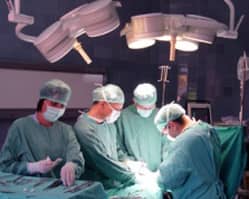










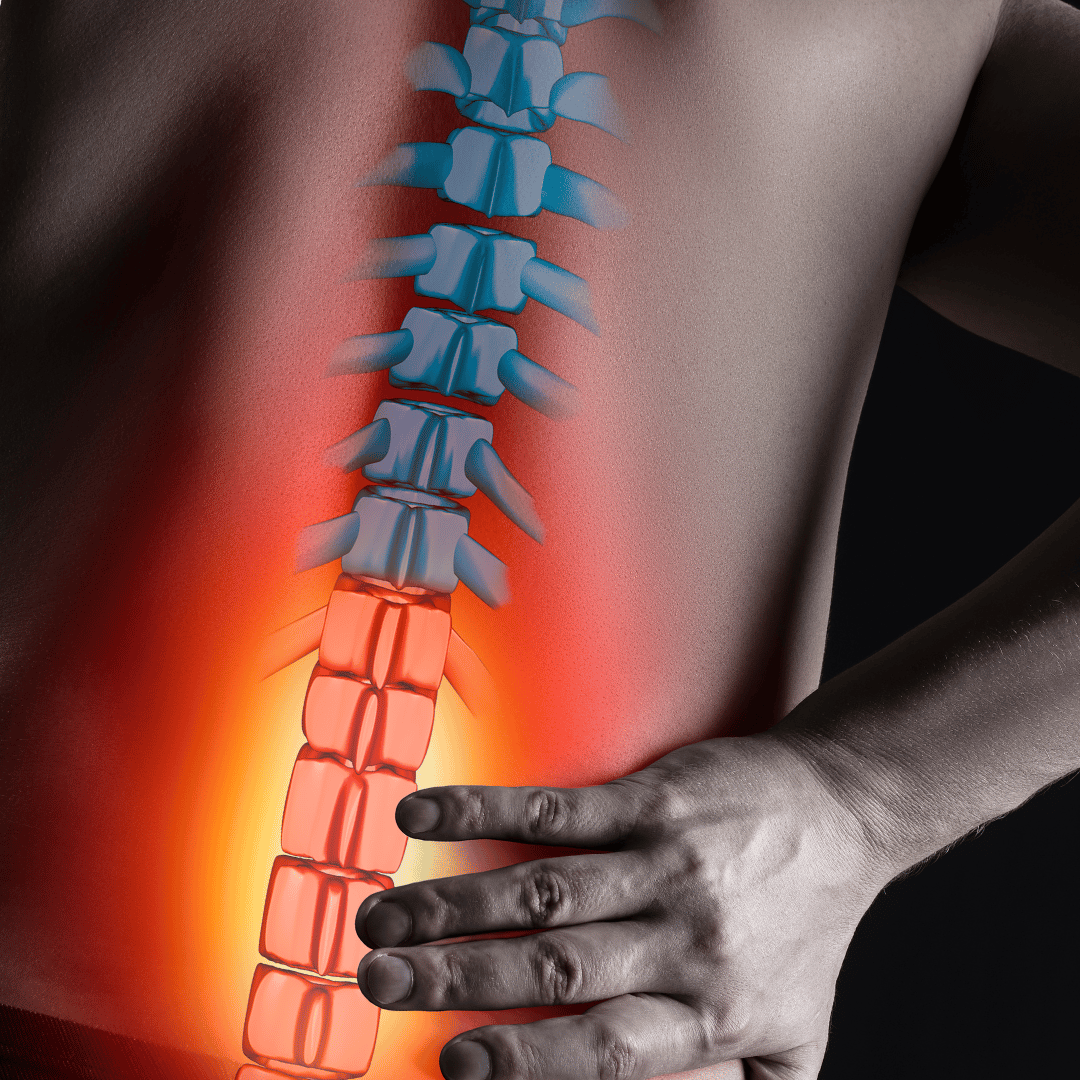


.png)

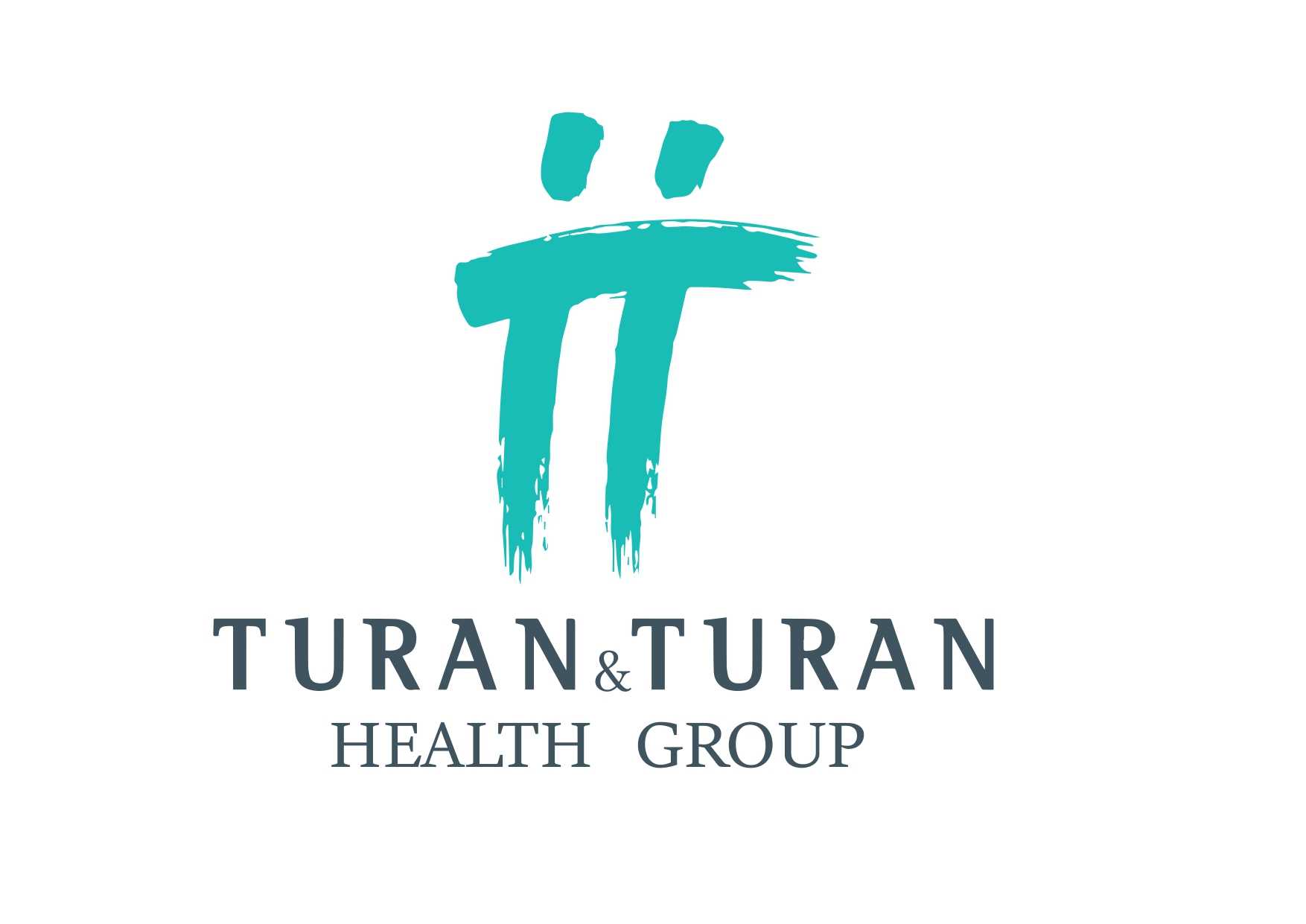



Share this listing